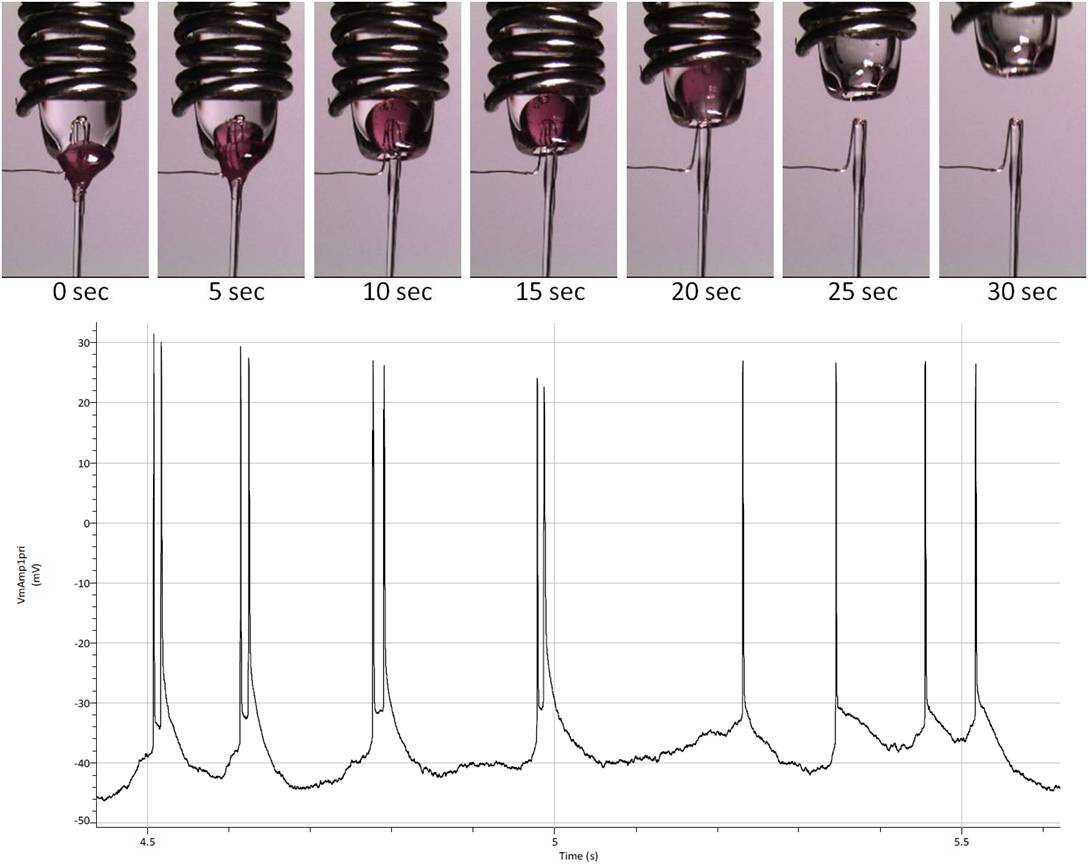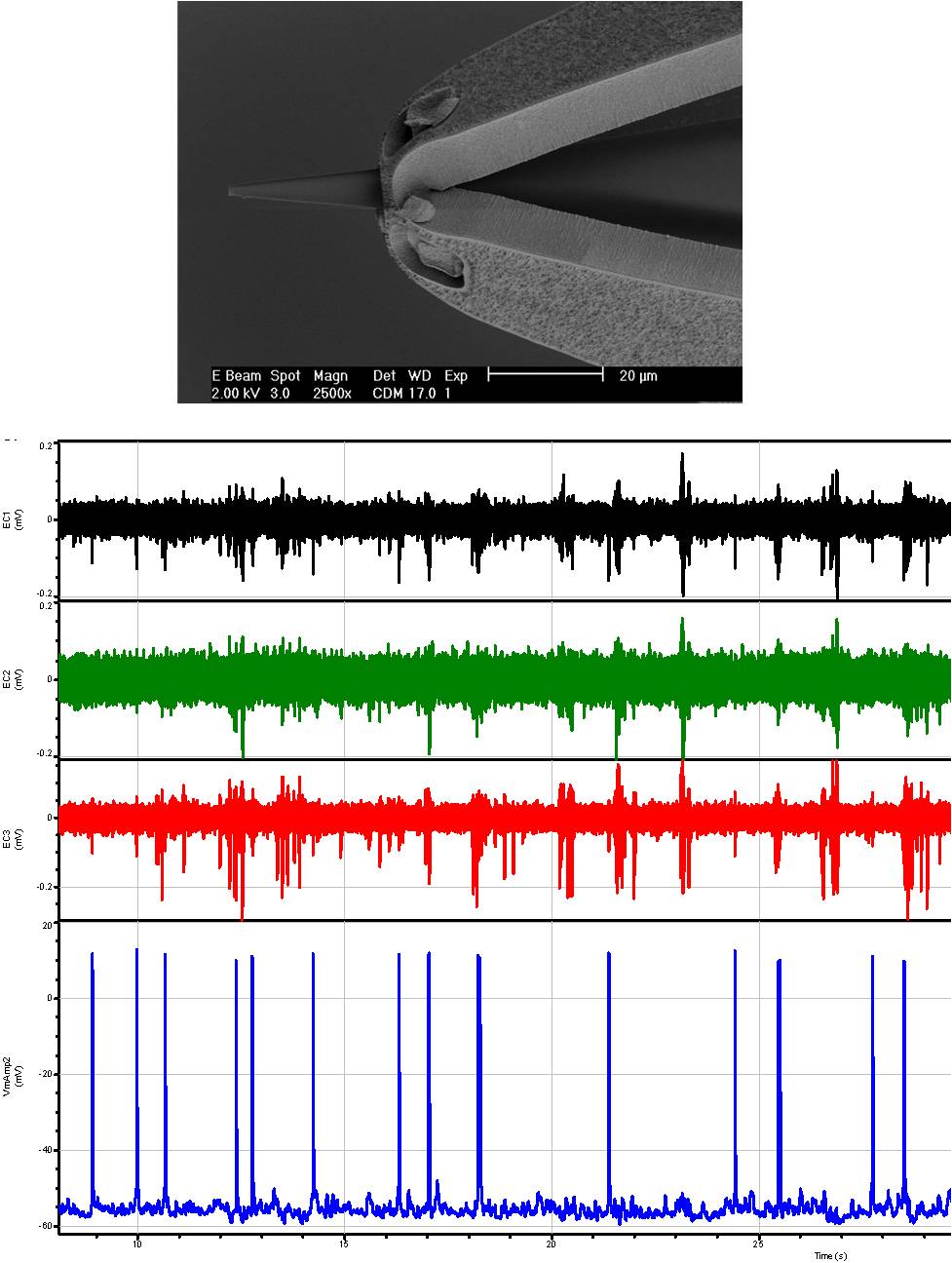Flexible Patch Pipettes
Intracellular recordings provide the most fundamental information about electrical activity in neurons. These measurements are extremely delicate and very sensitive to mechanical disturbances, and therefore nearly impossible in active neural systems. The primary goal in this project is to provide the neuroscientists at Janelia with new devices that allow them to reliably measure intracellular electrical properties of active neural circuits with single-cell resolution. Images below show the performance of a novel device as compared to the standard patch electrode when subject to a mechanical impact.
Upper images show the flexible pipette (left), and conventional pipette (right). Below recordings show respective electrical signal observed during mechanical shock to the air-floated table of the experiment.
Harpoon Patch Pipettes
While glass pipettes provide exquisite sensitivity for intracellular and juxtacellular recordings, the mechancial size and rigidity of a large piece of glass tubing is in many experiments an undesirable but an accepted consequence of the technique for inserting the pipette to a controllable location. We are developing methods to decouple the fine properties of the glass electrode tip from the bulk of the glass tubing, while providing mechanical stiffness for the initial insertion to a neuron of interest, using the idea of a harpoon. Once a neuron has been located and a patch seal obtained, the glass tubing holder is withdrawn leaving the wire and electrode tip in place. The device and recording from rat hippocampus are shown below.

Upper image shows a pipette tip decoupling from its glass shank. Lower trace is an intracellular recording from rat hippocampus obtained with a free-floating patch electrode.
Flexible Extracellular Electrodes for Patch Pipettes
It is often of interest to determine the extracellular field of a patched neuron in order to correlate the local field with spiking activity. We developed a lithographic technique to form three-site flecible electrodes mounted onto a standard patch pipette. This tri-electrode patch pipette is shown below, which provided the intracellular and extracellular recordings displayed, and is currently being used to develop 'ground truth'-based spike sorting.

Extracellular tri-electrode patch pipette, with extracellular (black, green red traces) and intracellular (blue trace) recordings for a neuron in rat hippocampus.
Future Directions
We continually look at opportunities to utilize modern advances in semiconductor fabrication, optoelectronics, and microdevice development (shown below) to advance the field of experimental electrophysiology at Janelia. We believe that in miniaturizing present neural recording systems, by integration of novel micro-devices into assembled systems, new opportunities will arise in obtaining fundamental intracellular information from active neural systems with single-cell resolution.
Photocell die (left image), VCSEL laser die (center), and possible autonomous device for wireless patch recording (right).

